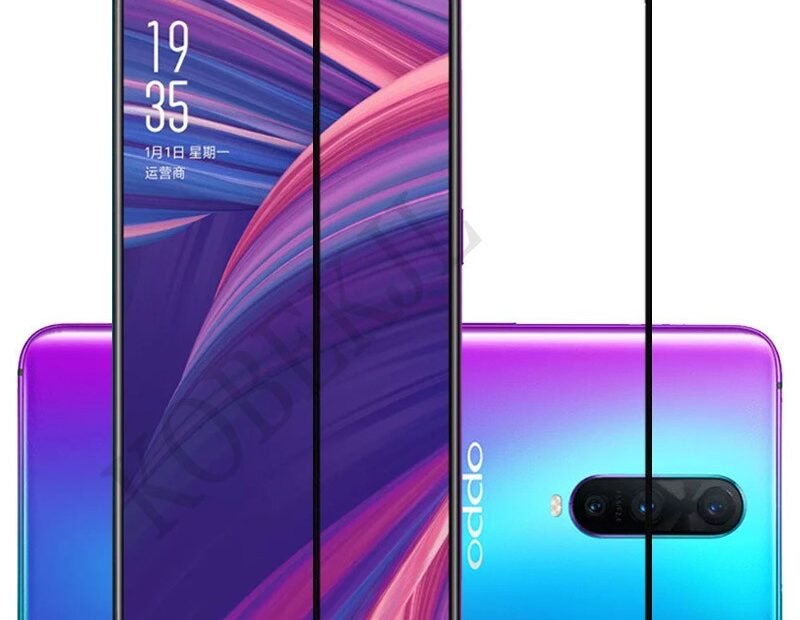The Oppo R17 Pro, released in late 2018, was positioned as a premium mid-range smartphone with a focus on design, camera capabilities, and fast charging. Oppo aimed to deliver a high-end experience without the flagship price tag, competing with devices like the Huawei P20 Pro and OnePlus 6T. This review covers its hardware, software, real-world performance, and how it compares to rivals.
Hardware Specifications
Design & Build
- Dimensions: 157.6 x 74.6 x 7.9 mm
- Weight: 183g
- Build: Glass front (Gorilla Glass 6), glass back, aluminum frame
- Colors: Radiant Mist, Emerald Green
- Water Resistance: No official IP rating
The R17 Pro boasts a stunning gradient glass back with a glossy finish that shifts colors under light. The curved edges and slim profile make it comfortable to hold, though the glass attracts fingerprints.
Display
- Type: AMOLED
- Size: 6.4 inches
- Resolution: 1080 x 2340 pixels (~402 PPI)
- Aspect Ratio: 19.5:9
- Notch: Small waterdrop notch
The AMOLED panel delivers vibrant colors, deep blacks, and excellent sunlight visibility. The small notch maximizes screen real estate, making it ideal for media consumption.
Performance
- Chipset: Qualcomm Snapdragon 710
- CPU: Octa-core (2×2.2 GHz Kryo 360 Gold & 6×1.7 GHz Kryo 360 Silver)
- GPU: Adreno 616
- RAM: 8GB
- Storage: 128GB (non-expandable)
The Snapdragon 710 provides smooth performance for daily tasks and moderate gaming. The 8GB RAM ensures excellent multitasking, though heavy gamers might prefer a flagship chipset.
Camera
- Rear Cameras:
- 12MP (f/1.5-2.4, dual aperture, OIS, PDAF)
- 20MP (f/2.6, secondary sensor for low-light)
- TOF 3D depth sensor
- Features: Dual-LED flash, AI scene recognition, Ultra Night Mode
- Video Recording: 4K@30fps, 1080p@30/60/120fps, 720p@240fps
- Front Camera: 25MP (f/2.0), AI beautification, 1080p@30fps
The dual-aperture system (f/1.5 in low light, f/2.4 in daylight) helps capture well-exposed shots. The Ultra Night Mode improves low-light photography significantly, though it still lags behind Huawei’s Night Mode.
Battery & Charging
- Battery Capacity: 3700 mAh
- Charging: 50W SuperVOOC fast charging (0-100% in ~35 mins)
- Battery Life: Lasts a full day with moderate usage
The SuperVOOC charging is a game-changer—faster than most flagships at the time. However, battery optimization could be better, as standby drain is noticeable.
Connectivity & Ports
- USB: USB Type-C (no USB 3.0)
- 3.5mm Jack: No
- Bluetooth: 5.0
- Wi-Fi: 802.11 a/b/g/n/ac
- NFC: Yes (region-dependent)
Audio
- Single bottom-firing speaker (average loudness)
- No stereo speakers
Security
- In-display fingerprint scanner (early version, slightly slow)
- Face unlock (fast but less secure)
Software Specifications
- OS at Launch: Android 8.1 Oreo (ColorOS 5.2)
- Upgrade Path: Android 9 Pie (ColorOS 6)
- UI: ColorOS (heavy customization, bloatware)
ColorOS is feature-rich but cluttered. The UI has improved over time, but stock Android fans may find it overwhelming.
Personal Experience: From Unboxing to One Month of Use
Unboxing & First Impressions
The R17 Pro comes in an elegant white box with:
- The phone
- 50W SuperVOOC charger
- USB-C cable
- Clear silicone case
- SIM ejector tool
The gradient back immediately stood out—it looked premium and unique. The AMOLED display was vibrant, and the in-display fingerprint scanner felt futuristic, though it wasn’t as fast as traditional sensors.
Daily Usage
- Performance: Smooth for social media, browsing, and light gaming. PUBG Mobile ran at Medium settings (30fps) without major throttling.
- Battery Life: Lasted a full day (~5-6 hours SOT). The 50W charging was a lifesaver—10 minutes gave ~40% battery.
- Camera: Daylight shots were sharp, but low-light performance was inconsistent. The Ultra Night Mode helped, but processing took 3-4 seconds.
- Software: ColorOS had too many pre-installed apps, and some settings were buried deep.
One Month Later
- Pros:
- Stunning design (still turned heads)
- Super-fast charging (best feature)
- Good daylight camera performance
- Cons:
- No headphone jack (annoying for wired earphone users)
- Software felt bloated
- In-display fingerprint scanner was unreliable at times
Comparison with Competitors
| Feature | Oppo R17 Pro | OnePlus 6T | Huawei P20 Pro | Xiaomi Mi 8 |
|---|---|---|---|---|
| Display | 6.4″ AMOLED | 6.41″ AMOLED | 6.1″ OLED | 6.21″ AMOLED |
| Processor | Snapdragon 710 | Snapdragon 845 | Kirin 970 | Snapdragon 845 |
| RAM/Storage | 8GB + 128GB | 6/8GB + 128/256GB | 6GB + 128GB | 6GB + 64/128/256GB |
| Rear Camera | 12MP + 20MP + TOF | 16MP + 20MP | 40MP + 20MP + 8MP | 12MP + 12MP |
| Battery | 3700 mAh (50W charging) | 3700 mAh (20W Dash Charge) | 4000 mAh (22.5W) | 3400 mAh (18W) |
| Software | ColorOS (Android 8.1) | OxygenOS (Near-stock) | EMUI (Heavy skin) | MIUI (Heavy skin) |
| Price (2018) | ~$600 | ~$550 | ~$800 | ~$450 |
Key Takeaways:
- The Oppo R17 Pro had better charging than all competitors.
- The OnePlus 6T offered better performance (SD 845) and cleaner software.
- The Huawei P20 Pro had a superior camera but was much more expensive.
- The Xiaomi Mi 8 was cheaper but lacked fast charging and had MIUI bloat.
Pros & Cons
Pros:
- Stunning gradient design
- 50W SuperVOOC charging (industry-leading at the time)
- Good AMOLED display
- Decent camera with dual-aperture tech
Cons:
- No headphone jack
- ColorOS feels bloated
- In-display fingerprint scanner is slow
- Battery life could be better
Final Verdict
The Oppo R17 Pro was a premium mid-ranger with standout features like 50W charging and a gorgeous design. However, its software experience and in-display fingerprint scanner held it back. If fast charging and aesthetics were priorities, it was a great pick—but power users would prefer the OnePlus 6T for better performance.
